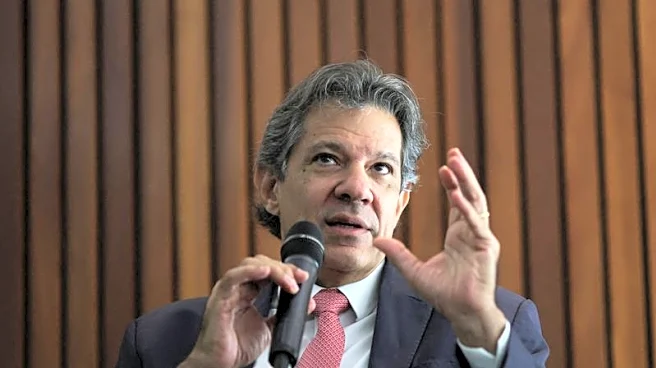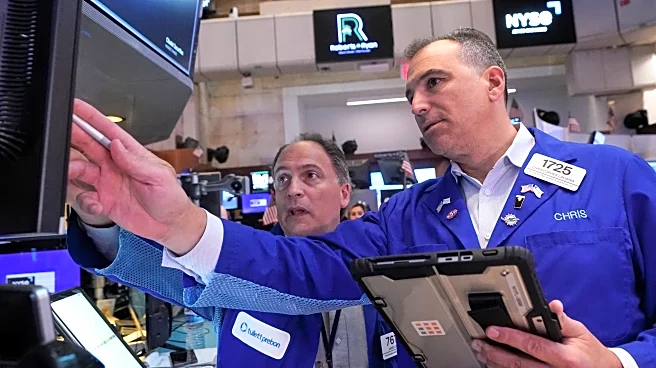What is the story about?
What's Happening?
The recent introduction of a $100,000 fee for companies sponsoring H-1B visas has created significant concern within the U.S. business community. This policy aims to reduce dependency on foreign talent, but its implications are complex. The H-1B program has been crucial for sectors like technology, healthcare, and engineering, where specialized skills are often lacking domestically. The new fee could force companies, especially small and mid-sized ones, to reconsider their hiring strategies. Larger corporations might absorb the cost, but smaller firms could face challenges in innovation and global competitiveness. Some businesses may shift to alternative visa options or hire talent abroad, potentially leading to a 'war for talent' in critical areas.
Why It's Important?
The fee increase could have far-reaching effects on the U.S. economy and workforce. While intended to create more jobs for U.S. workers, the policy might instead drive companies to move operations overseas or limit their expansion in the U.S., reducing job opportunities for both foreign and domestic workers. The U.S. has historically benefited from attracting global talent, which contributes to innovation and economic growth. By imposing financial barriers, the U.S. risks losing talent to countries with more welcoming policies, potentially undermining its competitiveness in key sectors. The policy could also slow the introduction of innovative products and services to the market, a significant disadvantage in today's fast-paced business environment.
What's Next?
Businesses are likely to explore strategic workforce solutions to navigate the new landscape. This includes leveraging Employer of Record (EOR) solutions to hire globally without setting up foreign entities, and building nearshore and offshore teams to access talent while managing costs. Companies may also explore alternative visa classifications and align HR strategies with business goals to maintain innovation and competitiveness. Policymakers are encouraged to consider reforms that balance domestic worker protection with the need to fill genuine talent gaps. Suggestions include tiered fees based on company size, investment in STEM education, and streamlined pathways for international students graduating from U.S. universities.
Beyond the Headlines
The policy change highlights broader issues in U.S. immigration and workforce strategies. It underscores the need for a nuanced approach that secures opportunities for American workers while maintaining the U.S.'s role as a global talent hub. The situation also raises questions about the balance between protecting domestic jobs and fostering an environment conducive to innovation and economic growth. As businesses adapt, there may be long-term shifts in how companies approach talent acquisition and workforce planning, potentially leading to increased diversity and operational efficiency.
AI Generated Content
Do you find this article useful?















